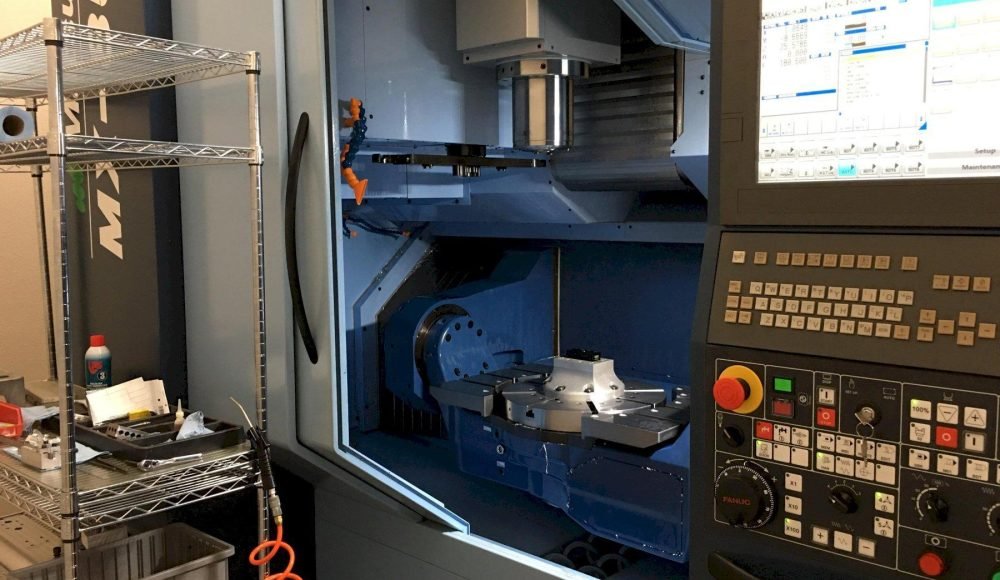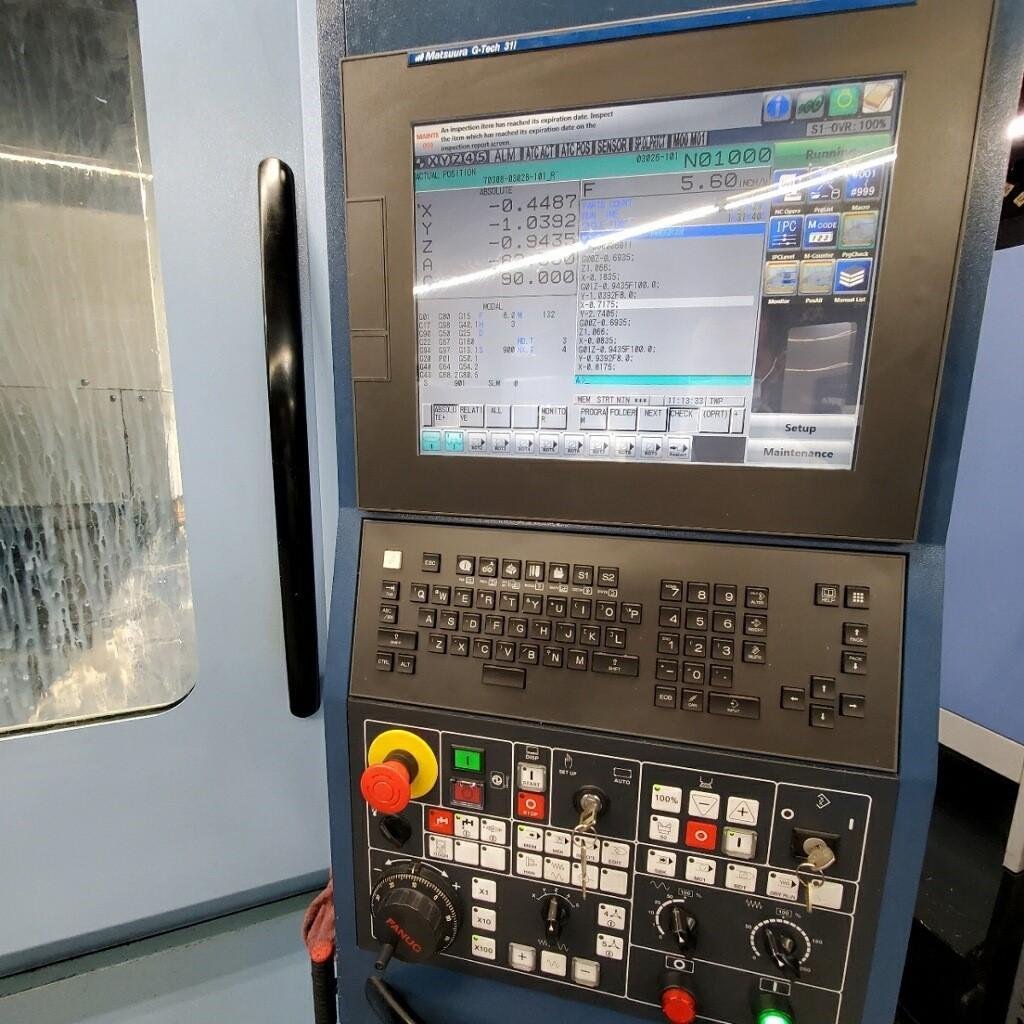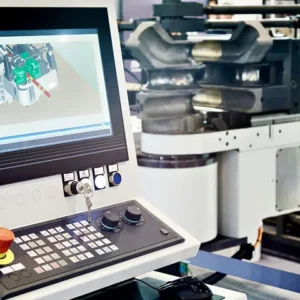現代の製造業の世界, 機械加工センターは不可欠になりました. 自動車や航空機から複雑な医療機器まで, 機械加工センターは、比類のない精度を提供します, 柔軟性, と効率. この包括的なガイドは、機械加工センターの世界に深く潜ります, コンポーネントの詳細, 種類, アプリケーション, もっと.
機械加工センターとは何ですか?
あ 機械加工センター (MC) 高度です, 複数の機械加工操作を実行できるコンピューター制御の工作機械. 従来のマシンとは異なります, ツールの変更に手動で調整する必要があります, 機械加工センターには、自動ツールチェンジャーなどの自動システムが装備されています (ATC), ダウンタイムを大幅に削減し、生産効率を高めます.
機械加工センターは、多くのタスクを扱います:
フライス加工
掘削
つまらない
タッピング
研削
リーミング
それらの汎用性により、産業は非常に正確な複雑な部品を生産することができます.
歴史的背景
機械加工センターの概念は1950年代初期にさかのぼります. 発明者 ジョン・T. パーソンズ そして フランク・L. 盗まれた 協力して、最初の数値制御ミリング機を作成しました. 彼らの先駆的な仕事は、マサチューセッツ工科大学のサーブメカニズム研究所によってさらに洗練されました, 今日のCNC加工センターの基礎を築きます. この革新的な技術は自動化を導入しました, 製造業の精度と生産性を劇的に向上させます.
機械加工センターの主なコンポーネント
機械加工センターは、さまざまな複雑なコンポーネントで構成されています, 正確で効率的な操作にはそれぞれ重要です:
1. メインスピンドルエリア
切削工具を保持し、必要な回転速度を提供します.
加工精度と表面仕上げの品質を決定します.
2. テーパーフィードメカニズム
切削工具を正確に配置します.
機械加工中に正確なツールの深さと角度を保証します.
3. 自動ツールチェンジャー (ATC)
ツールを迅速かつ効率的に切り替えます.
手動ツールの変更時間を短縮します, 生産性の最適化.
4. ツールマガジン
操作中に必要なさまざまな切削工具を保存します.
迅速なツールの選択と交換を促進します.
5. 自動パレットチェンジャー (APC)
ワークピースのロード/アンロードを自動化します.
ダウンタイムを大幅に短縮し、スループットを増加させます.
6. チップおよびクーラント処理システム
チップを削除し、ツールの効率と寿命を維持するためにクーラントを供給します.
ワークスペースを清潔に保ち、安全性を高めます.
7. 過負荷と摩耗検出器
ツールと機械の条件を監視します.
過度の負荷やツールの摩耗などの異常を検出することにより、損傷を防ぎます.
8. 自動ドア操作
機械加工エリアへの安全で便利なアクセスを提供します.
機械加工中心の軸
機械加工センターは通常、複数の軸で動作します, ツールとワークの動きの正確な制御を可能にします:
x軸: 水平運動 (左右)
Y軸: 水平運動 (フロントバック)
z軸: 垂直動き (アップダウン)
A軸: X軸の周りの回転
B軸: y軸の周りの回転
C軸: Z軸の周りの回転
一緒に, これらの軸は、複雑な加工タスクに必要な複雑な動きを可能にします.
機械加工センターの種類
1. 水平マシンセンター (HMC): 左右の精度
それは何ですか:
これらのマシンは、スピンドルを水平に配置しています, つまり、ツールは上からではなく側面からカットされることを意味します.
なぜそれを使うのか?
重い人に最適です, 重力がチップをクリアするのに役立つため、大きな部分, 作業エリアをきれいに保ちます.
に最適です:
大きな自動車部品, 重機コンポーネント, 速度と強度が重要な大量生産.
2. 垂直機械加工センター (VMC): 上下の汎用性
それは何ですか:
ここ, スピンドルは下に向かっています, ツールがワークピースの上部にカットされていると.
なぜそれを使うのか?
小さな部品や詳細な作業に最適です. これらのマシンはよりタイトなスペースにうまく収まり、多くの場合、操作してセットアップしやすいことがよくあります.
に最適です:
小規模から中規模のプロジェクト, 金型, 彫刻, 詳細な精密加工, およびプロトタイプが機能します.
3. ユニバーサルマシニングセンター (umc): オールインワンの柔軟性
それは何ですか:
これらのマシンは、水平方向と垂直の両方でスピンドルを回転させることができます. 多くの場合、5軸のマシンです, つまり、ほとんどすべての角度からカットできることを意味します.
なぜそれを使うのか?
ピースを別のマシンに移動せずに複数の操作を必要とする複雑な形状や部品に最適.
に最適です:
航空宇宙部品, 複雑な型, 医療機器, 複数角度の切断が必要な精度コンポーネント.
典型的な機械加工操作
1. フライス加工: 切断と成形
それは何ですか: スピニングツールを使用して素材を切り取り、ワークを詳細なデザインに形作る.
なぜそれが役に立つのか: スロットのような複雑な形を作成するのに最適です, ポケット, または湾曲した表面.
2. 掘削: 穴を作る
それは何ですか: 材料をスピンして押し込むドリルビットを使用して正確な穴を作成する.
なぜそれが役に立つのか: 正確なプロジェクトに不可欠です, ネジ用の穴をきれいにします, ボルト, またはフィッティング.
3. つまらない: 既存の穴の改善
それは何ですか: 穴の拡大と精製の精度と滑らかさを改善する.
なぜそれが役に立つのか: 既存の穴のサイズが完全に大きいことを確認します, 真っ直ぐ, 正確な継手の準備ができています.
4. タッピング: スレッドの作成
それは何ですか: ネジまたはボルトをしっかりと装着するために穴の中に内部糸を切る.
なぜそれが役に立つのか: しっかりとかつしっかりと固定する必要がある部品を組み立てるために重要.
5. 研削: 滑らかな表面を達成します
それは何ですか: 研磨ホイールを使用して、材料を慎重に除去します, 超滑らかな表面を作成します.
なぜそれが役に立つのか: 滑らかさと正確な測定が非常に重要な部品を仕上げるのに最適です.
6. リーミング: 穴の精密仕上げ
それは何ですか: 微調整以前に掘削された穴は、正確な寸法になりました, 滑らかさ, と丸み.
なぜそれが役に立つのか: 正確な穴のサイズと仕上げが重要な場合は、自動車や航空宇宙コンポーネントのように重要な場合.
業界ごとの機械加工センターのアプリケーション
機械加工センターには、さまざまな業界に幅広い用途があります:
自動車
エンジンコンポーネント, トランスミッションギア, シャーシパーツ, ブレーキシステム.
航空宇宙
タービンブレード, 着陸装置, 複雑な構造コンポーネント.
医学
手術器具, インプラント, 補綴デバイス.
石油とガス
バルブボディ, 掘削ツール, 堅牢なポンプコンポーネント.
エレクトロニクス
コネクタなどの精度コンポーネント, 半導体ハウジング, ヒートシンク.
マリン
プロペラ, 油圧部品, 船と潜水艦の構造コンポーネント.
エネルギー
風力タービン用のコンポーネント, ソーラーフレーム, 原子炉部品.
工事
ギアなどの重機部品, ジョイント, および構造要素.
機械加工センターのコスト
コストは、マシンの種類に基づいて大きく異なります, サイズ, 機能性, とブランド:
水平マシニングセンター: $150,000 - 600,000ドル
垂直機械加工センター: $50,000 - 200,000ドル
ユニバーサルマシニングセンター: $200,000 - $ 700,000
5-軸加工センター: $200,000 - $ 1,000,000
CNCターニングセンター: $60,000 - $ 350,000
カスタマイズ, ブランドの評判, 高度な機能は価格にさらに影響を与えます.
機械加工センターのプログラミングと制御
機械加工センターは、高度なソフトウェアとコントロールを利用しています:
CAD (コンピュータ支援設計): コンポーネントの正確な3Dモデルを作成します.
カム (コンピュータ支援製造): CADデザインをGコードに変換します.
Gコード: 動きを制御する機械可読命令, 速度, およびツールパス.
コントロールパネル: マシンの操作とプログラム入力を管理するためのユーザーインターフェイス.
サーボモーター & ドライブ: 電気信号を正確な機械的運動に変換します.
フィードバックシステム: 機械加工中の継続的な監視と調整.
一般的な問題と解決策
典型的な問題には含まれます:
工具の摩耗: 不正確な使用または不十分な冷却によって引き起こされます.
振動 (おしゃべり): 不適切なセットアップまたはツール選択の結果.
クーラントの問題: 不十分なクーラントは過熱を引き起こす可能性があります.
精度の損失: 摩耗した機械コンポーネントによる.
プログラミングエラー: GコードまたはCAMプロセスの間違い.
予防保守, 適切なトレーニング, これらの問題を効果的に緩和します.
違い: 機械加工センターvs. 従来の機械
機械加工センターは、従来の機械とは大きく異なります:
オートメーション: 機械加工センターは、自動ツールとパレットチェンジャーを備えています, 肉体労働の削減.
精度: CNCコントロールは、精度と再現性を向上させます.
多用途性: 1つのセットアップ内で複数の操作を実行できます.
効率: 高い生産率と最小限のダウンタイム.
結論
機械加工センターには、製造業が根本的に変換されています, 精度の向上, 効率, と柔軟性. 自動車から航空宇宙および医療アプリケーションまで, 複雑なコンポーネントの製造における彼らの役割は不可欠です. テクノロジーとソフトウェアの継続的な進歩, 機械加工センターは、間違いなく将来の工業生産を形作る上で極めて重要な役割を果たします.
よくある質問
1: 機械加工中心はCNCマシンと同じです?
あ: 機械加工センターは、複数の操作専用に装備されているCNCマシンの一種です (例えば, フライス加工, 掘削) 自動ツールチェンジャーとパレットシステムを備えています.
2: 機械加工センターはメンテナンスを受ける頻度です?
あ: 定期的な予防保守 (毎週検査, 毎月の詳細なチェック, 年間完全なサービス) 長期的な信頼性とパフォーマンスを保証します.
3: 機械加工センターは複数の材料を処理できます?
あ: はい, 機械加工センターは、多様な材料を処理するように設計されています, 金属を含む, プラスチック, および複合材料, ツールを調整することにより, 切断速度, クーラントタイプ.





